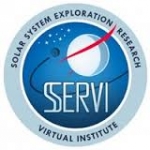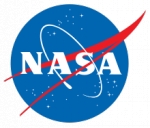Displaying items by tag: solar system
Solar System Exploration Research Virtual Institute (SSERVI)
the Solar System Exploration Research Virtual Institute (SSERVI), a NASA institute, fosters collaborations within and among competitively selected domestic teams, the broader lunar science community, and multiple international partners in order to:
- Conduct basic and applied research fundamental to lunar and planetary sciences while advancing human exploration of the solar system,
- Conduct and catalyze collaborative research in lunar and planetary science, enabling cross-disciplinary partnerships throughout the science and exploration communities,
- Provide scientific, technical, and mission-relevant analyses for appropriate NASA programs, planning, and space missions as requested by NASA,
- Explore innovative ways of using information technology for scientific collaboration and information dissemination across geographic and contextual boundaries to stimulate inter- and cross-discipline research,
- Train the next generation of scientific explorers through research opportunities, and encourage global education and public outreach (EPO) through formal education, informal programs, and participatory public events.
Max Planck Institute for Solar System research (MPS)
The Max Planck Institute for Solar System Research (MPS) is a research institute in Astronomy / Astrophysics, located in Lindau (Katlenburg-Lindau), Germany.
The exploration of the solar system is the central theme for the scientific research done at this Institute. It is organised in three departments: one for the Sun and Heliosphere, one for Planets and Comets, and the other for Physics of the interior of the Sun and Sun-like stars (formerly known as Helio and Asteroseismology Research Group). In addition, since 2002 there is also an International Max Planck Research School.
NASA - Goddard Space Flight Center (GSFC)
The Goddard Space Flight Center (GSFC) is a major NASA space research laboratory established on May 1, 1959 as NASA's first space flight center. GSFC employs approximately 10,000 civil servants and contractors, and is located approximately 6.5 miles (10.5 km) northeast of Washington, D.C. in Greenbelt, Maryland, USA. GSFC, one of ten major NASA field centers, is named in recognition of Dr. Robert H. Goddard (1882–1945), the pioneer of modern rocket propulsion in the United States.
GSFC is the largest combined organization of scientists and engineers in the United States dedicated to increasing knowledge of the Earth, the Solar System, and the Universe via observations from space. GSFC is a major U.S. laboratory for developing and operating unmanned scientific spacecraft. GSFC conducts scientific investigation, development and operation of space systems, and development of related technologies. Goddard scientists can develop and support a mission, and Goddard engineers and technicians can design and build the spacecraft for that mission. Goddard scientist John C. Mather shared the 2006 Nobel Prize in Physics for his work on COBE.
GSFC also operates two spaceflight tracking and data acquisition networks (the Space Network and the Near Earth Network), develops and maintains advanced space and Earth science data information systems, and develops satellite systems for the National Oceanic and Atmospheric Administration (NOAA).
GSFC manages operations for many NASA and international missions including the Hubble Space Telescope (HST), the Explorer program, the Discovery Program, the Earth Observing System (EOS), INTEGRAL, the Solar and Heliospheric Observatory (SOHO), the Rossi X-ray Timing Explorer (RXTE) and Swift. Past missions managed by GSFC include the Compton Gamma Ray Observatory, SMM, COBE, IUE, and ROSAT. Typically, unmanned earth observation missions and observatories in Earth orbit are managed by GSFC, while unmanned planetary missions are managed by the Jet Propulsion Laboratory (JPL) in Pasadena, California.



